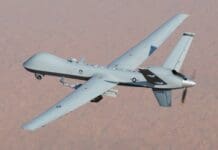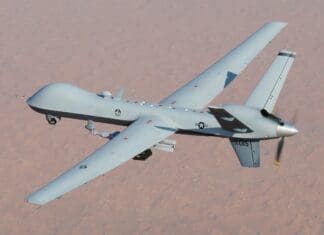
This post is also available in:
 עברית (Hebrew)
עברית (Hebrew)
Two new disaster drones delivered medical packages to victims and rescue personnel in a simulated mass casualty event recently at John Bell Airport in Mississippi.
The Telemedical Drone Project, known as HiRO (Health Integrated Rescue Operations), was developed by Italo Subbarao, DO, senior associate dean and Guy Paul Cooper Jr., a fourth-year medical student both from William Carey University College of Osteopathic Medicine.
The concept arose when the two studied the medical response to the devastating EF-4 tornado that struck Hattiesburg, Mississippi, in February 2013. In the past two years, they’ve developed multiple prototypes to support rural and wilderness medical emergencies, including ambulance drones designed to support victims and rescue personnel during mass shootings, bombings, or other terrorist attacks.
“Reaching the victims is the critical challenge in these situations. As an osteopathic physician, my goal was to find ways to help save lives. A medical drone is a bridge that delivers life-saving treatment directly to the victims, giving physicians eyes, ears and voice to instruct anyone on the site,” said Dr. Subbarao.
According to prnewswire.com, two new telemedical packages were deployed during the demonstration, one for a severely injured victim and the other for a mass casualty setup capable of treating up to 100 people with significant to minor injuries.
When the critical care kit opens, the physician appears on video and can direct treatment.
Cooper explained: “The kits provide immediate and secure access to a provider on the other end of the screen. The package was designed for use in the chaos and confusion where guidance must be simple, direct, and user-friendly. We feel that the features in these kits empower the provider and bystander to save lives”.

























